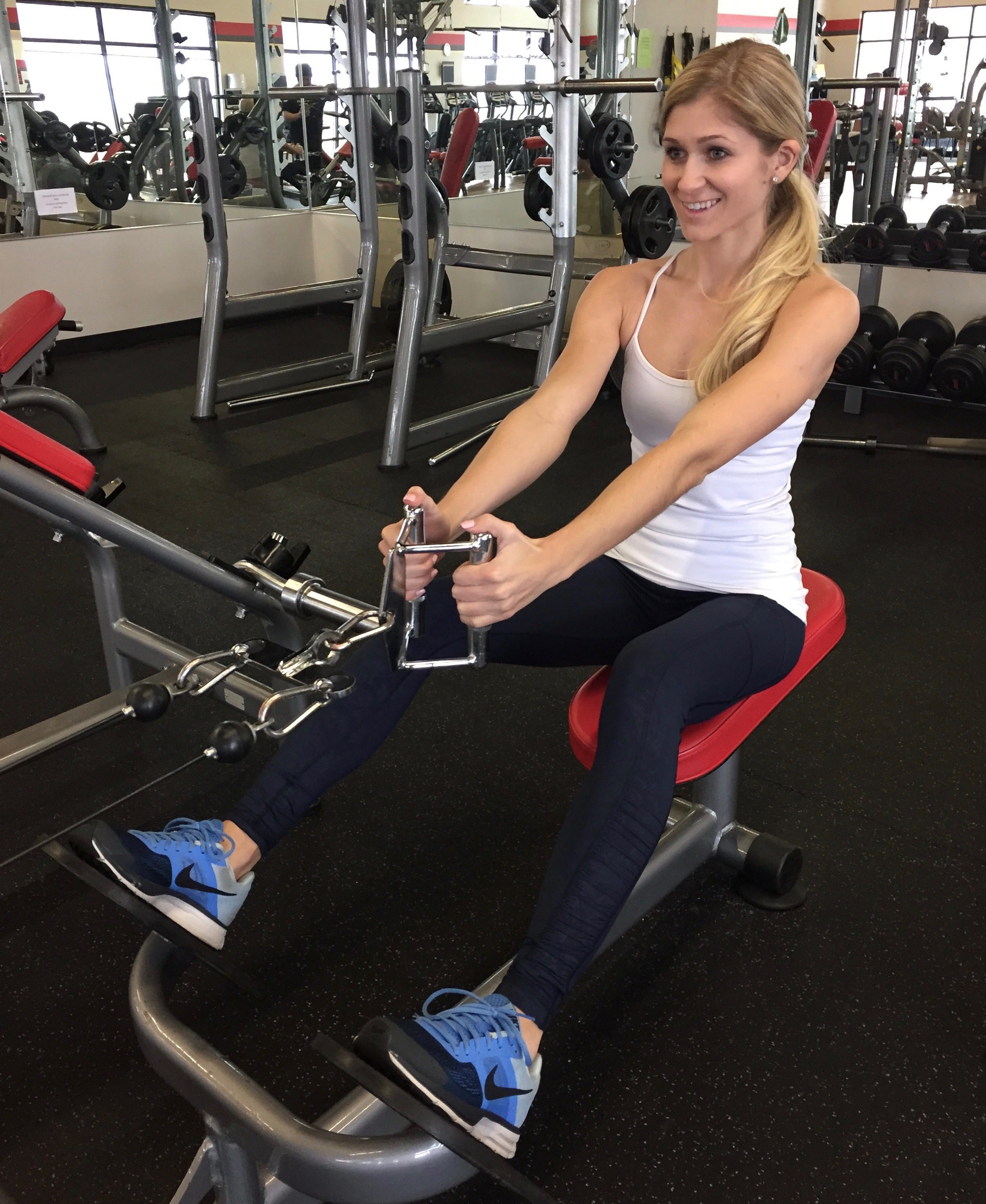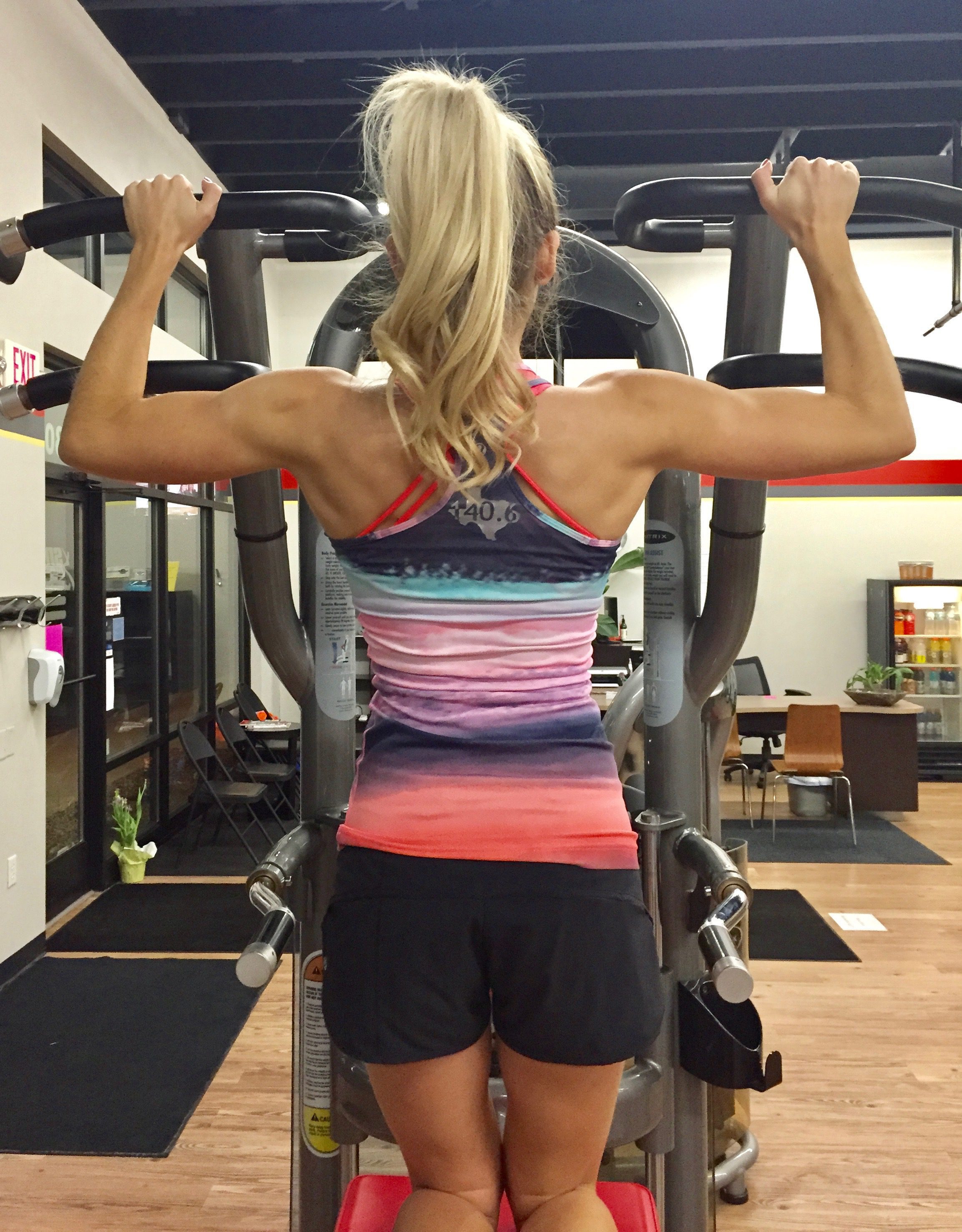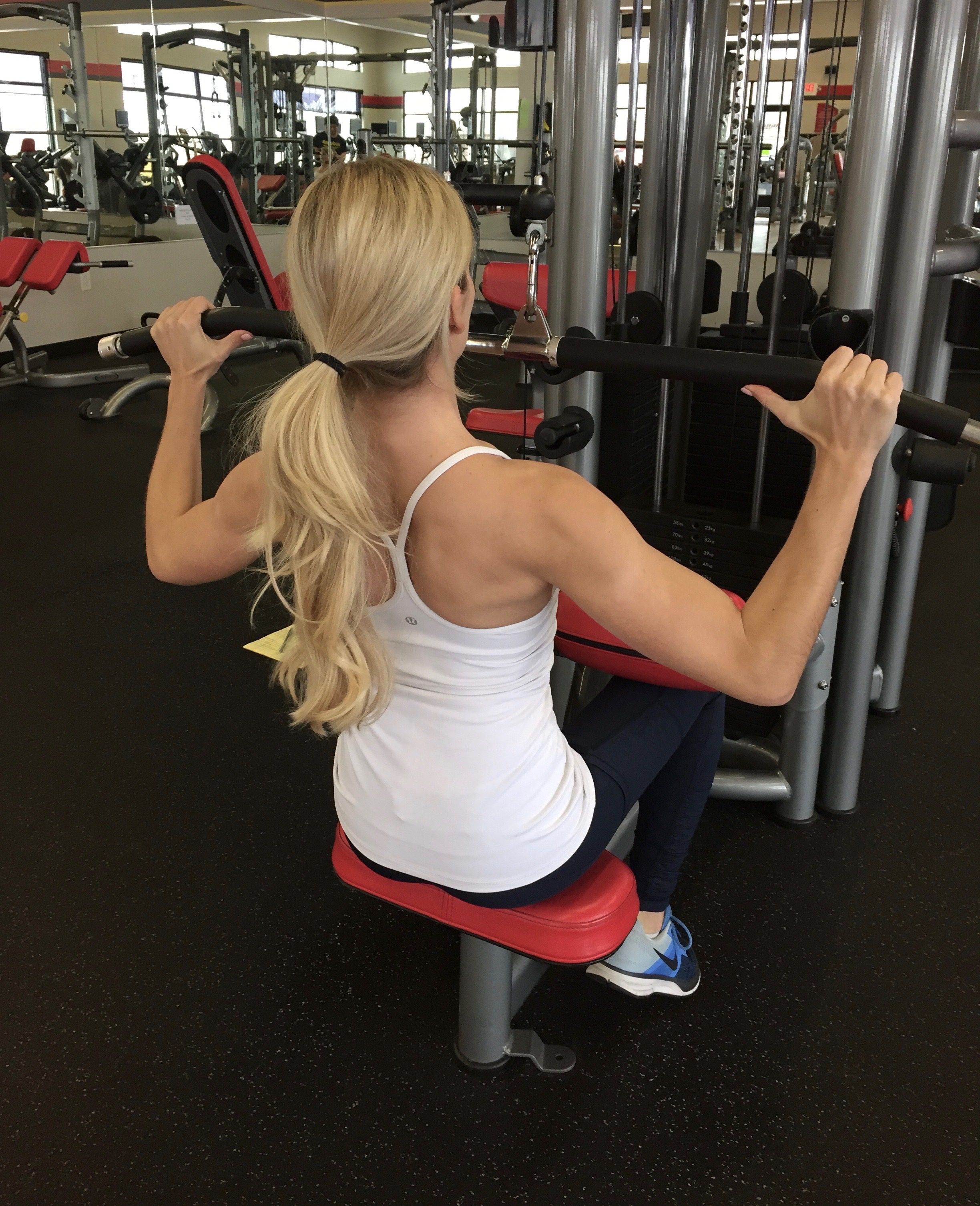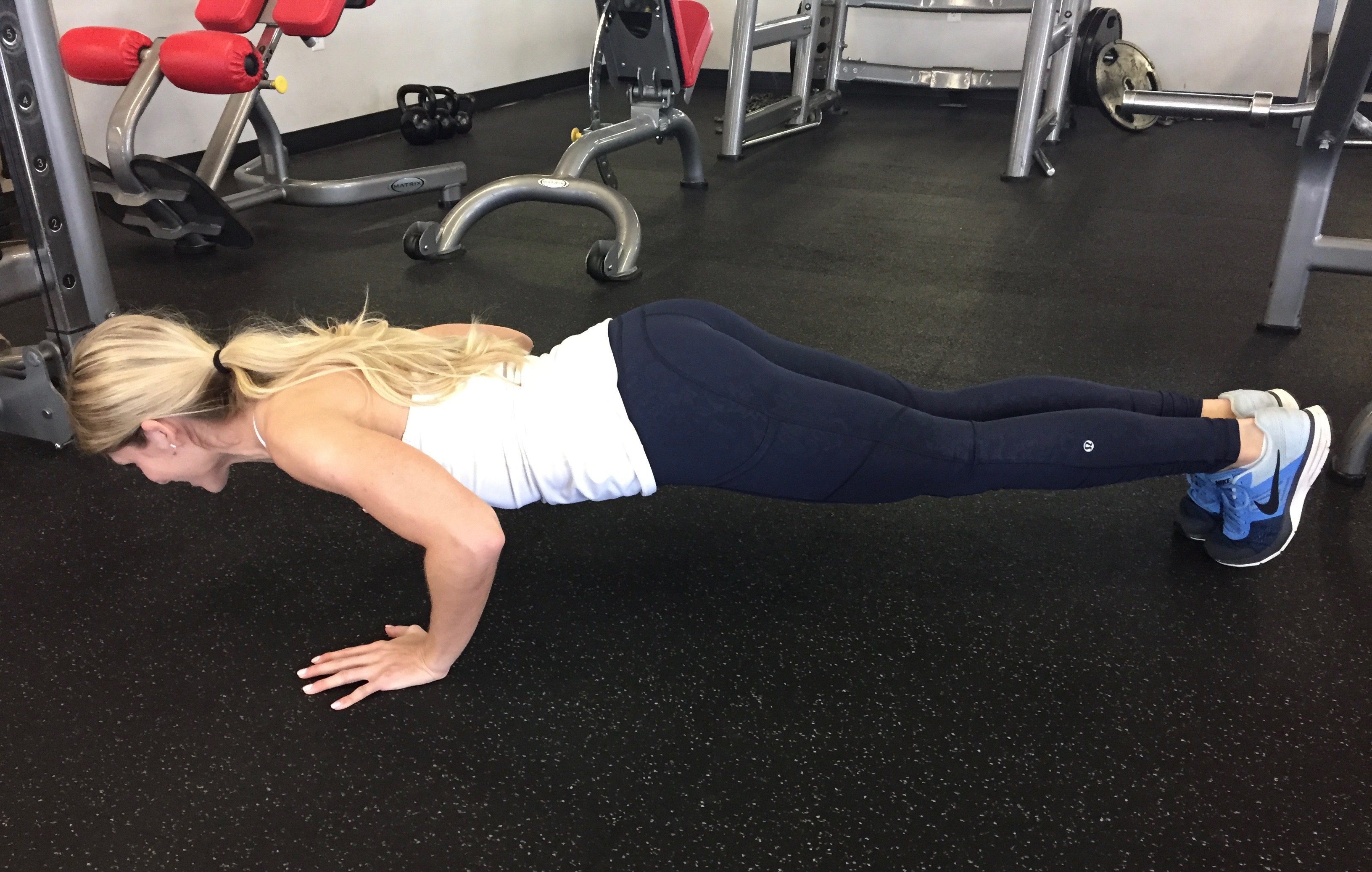I’m going to lay out all my cards… up until about 3 years ago, I couldn’t do a pull up. Not even one. I was embarrassed that I had come so far in my fitness journey – building strength and looking fit – to not be able to do a single pull up (especially difficult because as a little kid gymnast, I recall doing pull ups like it was nothing).
If you’re reading this as someone who can’t even complete one pull up or someone who’s looking to increase your pull up PR, I’m here to help! Don’t let anyone (including yourself!) tell you that you can’t do a pull up or that you can’t improve. If I can, you can and all it takes is a little strategy and some practice.
KNOW THE MUSCLES INVOLVED
First things first, we’ve got to identify the muscles involved in a pull up. I found a diagram of the major, superficial back muscles primarily involved in a pull up. However, it’s important to note you will be working almost all of your upper body muscles (chest + biceps big time too!) as well as the core to complete this movement.
DO ACCESSORY WORK
Why, oh why do so many of us ladies skip back day?! I’m so guilty of it. In fact, it’s my least favorite body part to train, but it’s probably one of the most important. In addition to helping us work improve our pull ups, regular back training leads to improved posture, a well-balanced physique and here’s some seriously extra incentive… a fit, sculpt back gives the appearance of an even smaller waistline!
Working our back muscles on a consistent basis will lead to greater strength and therefore, help us improve our pull ups. If working to complete a pull up or increasing your pull up PR, these movements become known as accessory work to help achieve that goal. Below are 3 exercises I would suggest including on a regular basis in your back workouts.
(1) Pulldowns
Pull downs come in many shapes and forms… overhand grip, underhand grip, wide grip, regular grip. All of these variations are great and primarily target the lat (properly known at the latissimus dorsi) muscles, which you can begin to feel under your armpit extending to the bulk of your mid-back. The key, for me, is performing pulldowns with lighter weight and working up slowly to effectively engage the lat muscles; know where they are and concentrate on those muscles as you work through the movement.

(2) Rows
Rows are great for the middle back. Just like with pulldowns, there are many variations of a row… you can play with the grip being overhand or underhand, the width of your grip, the equipment used (barbell, dumbbell or machine) and even the angle you complete the rows at.

(3) Core Work
Always keep in mind, your core is not synonymous with abdominal muscles. So often we think of the core as abs, but the core includes all the muscles of your lower back as well. For this reason, I love including exercises like plank (and all variations) as well as superman and hyperextension exercises in my routine.
PRACTICE PRACTICE PRACTICE
Accessory work will help us improve our overall upper body strength, but the real key to improving your pull up is practicing your pull up. Include pull ups in your routine on a regular basis. When I first set out to complete 1 pull up, I practiced them at every upper body workout just for 2-3 sets.
Think of this practice like riding a bicycle. There’s something known as muscle memory… we must actually practice the movement over and over for our bodies to be able to complete it properly. While riding a bicycle, we use leg strength for pedaling and core strength for balance. However, simply working those muscles wouldn’t be enough for a young child to simply “learn” how to ride a bicycle. The act of physically riding the bicycle must be practiced repeatedly until the strength and muscle memory develop.
Bottom line… if you want to do a pull up, practice pull ups.
PARTIALS + ASSISTANCE
So, what if you still can’t complete a pull up? Or how can you practice completing more without simply working to failure? Try partial pull up variations and use assistance through the ways I will describe here.
(1) Assisted Pull Up Machine or Bands
If you’re working out in a gym, you’ve likely seen the assisted pull up machine. It allows you to add weight to the machine in order to counteract your body weight, so you’re learning and practicing the pull up movement without having to use all of your strength to pull up your bodyweight. If you’re not working out in the gym or if you want to try another assisted variation, you can loop a resistance band around your pull up bar, place your knees or feet in the loop and use that as assistance to help you complete the exercise.
(2) Hangs
Hollow Hangs – the hallow hang helps us get into the practice of beginning a pull up effectively. You’ll begin hanging onto a bar with your arms straight. Contract your core, pulling your belly button to your spine; this will naturally cause your legs and arm to slightly move out in front of you while a straight line remains from your shoulders to your hips. This hallow hang helps engage the lats and core to begin the movement. Hold this hang for a few seconds, relax and repeat.
Flexed Hangs – the flexed hang most resembles the top of a pull up movement. To practice your flexed hangs, you’ll use some sort of height assistance to help you jump to the bar so that your chin is over the bar and your arms are bent in a flexed position. Hold this movement for several seconds (15+), relax and repeat. Work up from 15 seconds to 30-45 seconds. You can also practice this movement with an underhand grip: palms facing your face. I like to alternate between the two.
(3) Negatives
In the flexed hang position, allow yourself to slowly go through the negative motion from bent/flexed arms to straight arms. As a general rule of thumb, I like to count 3-4 seconds as I work through a negative. This will help you build strength and practice a portion of the pull up movement. You may like to complete 1-2 sets of 10-15 negatives.
(4) Chin Ups
A chin up is different from a pull up in that a chin up is completed with an underhand grip (palms facing the face) whereas a pull up is completed with an overhand grip (palms facing away from the face). Most women tend to complete chin ups more easily than pull ups, so it’s a great place to practice!
All of these tips have helped me improve my pull ups and I hope they help you just as much!










Leave a comment